A phylum is the next category beneath kingdom. Most biology textbooks are organized by phyla with chapters covering topics such as “reptiles” or “mammals”. This collection includes various worksheets related to animal groups.
Introductory
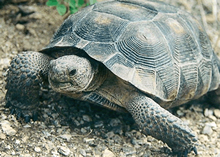
Slides and Overview of the Animal Kingdom
Animal Symmetry – identify types of symmetry
Animal Phyla Matching – match the phylum to pictures and descriptions
Characteristics of Life – make a concept map
Kingdom Protista
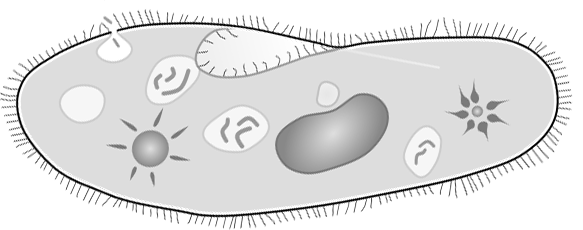
Slides and Overview of the Kingdom Protista
Ameba Coloring – color the structures of an ameba; pseudopodia, vacuole, nucleus..
Paramecium Coloring – color paramecium, vacuole, mouth pore, macronucleus, cilia..
Euglena Coloring – color euglena; flagella, chloroplast, pellicle…
Kingdom Protista Concept Map – organize the types of protists by characteristic
Protista Crossword – vocabulary; vacuole, paramecium, algae, malaria..etc
Protozoa – article with questions
Ameba & Paramecium Lab – view both specimens, compare and draw
Ameba & Paramecium Virtual Lab – use image sets on Flickr to view specimens
Ameba Lab – 15 minute lab, observe the movements of the ameba
Algae Lab – compare 3 types of algae: volvox, spirogyra, and euglena
Biodiversity of Ponds – sample pond water, identify organisms (protists, arthropods, macroinvertebrates)
Phylum Porifera & Phylum Cnidaria
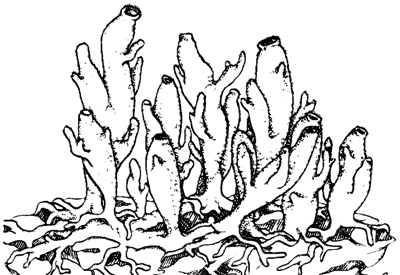
Sponge Anatomy – sponge image; students label amebocytes, collar cells, spicules…
Sponge Coloring – another anatomy page, color the structures
Hydra Anatomy – hydra image; students label tentacles, cnidocytes, buds…
Hydra Lab – view a living hydra and observe its behavior
Hydra and Other Cnidarians – article with questions
Slides and Overview of Sponges and Cnidarians
Phylum Platyhelminthes & Nematoda
Slides and Overview of Flatworms
Observation of a Planarian – view a live planarian and observe regeneration
Simple Worms Lab – microscopic observations of rotifers, nematodes, schistosomes, and tapeworms
Planaria Article – description of a planaria, with questions
Phylum Mollusca

Slides and Overview of Mollusks – Discusses characteristics of mollusks, types of mollusks
Squid Dissection – external and internal structures, using real squids
Virtual Squid – online dissection photos for students to view, labeling and questions, makeup lab
Mollusk Chart – compares cephalopods, gastropods, and bivalves
Phylum Annelida
Slides and Overview of Annelids and Segmented Worms
Observation of a Live Earthworm – test an earthworm’s response to light/dark, warm/cold
Earthworm Dissection – view the digestive, circulatory, and nervous system of a preserved earthworm
Earthworm Labeling – practice labeling the organs of an earthworm
Mollusk and Annelid Crossword Puzzle – basic terms and classification
Phylum Arthropoda
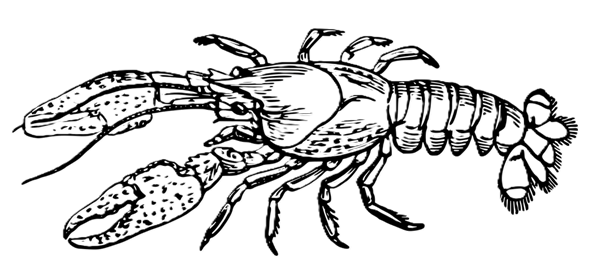
Slides and Overview of Arthropods
Arthropod Poetry – short riddles (poems) where students have to guess the associated vocab
Arthropod Chart – students complete a chart outlining the characteristics of arthropod subphyla
Arthropod Coloring – color and label the parts of various arthropods
Daphnia Heart Rate – experiment requires live daphnia, exposed to ethanol and measure the heart rate
Cicada Summer – observations and research on local cicadas, student design either real or virtual exhibit of a cicada species; only applicable during certain times of year
Insect Web Quest – students create a website that showcases 3 species of insects
Crayfish External Anatomy
Crayfish Internal Anatomy
Phylum Echinodermata
Phylum Chordata
Chordates and Vertebrates – notes and Google Slides
Anatomy of a Chordate – a simple diagram showing a lancelet and its anatomy
Construct a Chordate Cladogram – use Google Slides to learn how to interpret and build cladograms
How Does a Cladogram Reveal Evolutionary Relationships

Fish: Form and Function – Google Slides and Student Notes
Fish Temperature Lab – investigate how the respiration rate of a fish changes with temperate; graphing
Fish Temperature Make-up Lab – same as above, online version for students not in class
Observation of a Living Fish – simple lab where students observe a fish in a bea ker
Anatomy of a Bony Fish – color the structures of a fish, showing fins and internal anatomy
Amniote Egg Coloring – learn egg structures; yolk, allantois, amnion, chorion
Reptiles Crossword Puzzle – a simple vocabulary exercise focusing on reptiles and their classification
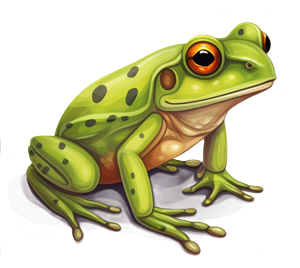
Amphibians – Form, Function, and Classification – notes and Google slides
Observation of a Living Frog – a list of tasks and experiments to perform a live frog (toad), the frog is not injured or dissected
Complete Frog Dissection Packet – handout for students that includes the external and internal anatomy, brain, and leg bones. Includes a list of terms to study for lab practical.
Birds – Form, Function, and Classification – notes and Google slides
Comparing a Human and Avian Skeleton – coloring and bone identification
Bird Beaks and Feet – view pictures of birds, make inferences about their diet and habitat, includes ppt
Birds and Reptiles Crossword Puzzle – using terms and vocabulary related to the reptile and birds
Animal Reproduction and the Amniote Egg – color the amniote egg and identify the main structures; compare to human reproduction
Mammal Crossword Puzzle – focus on the major orders of mammals and their characteristics
Google Slides and Notes on Reptiles
Animal Report – diagram to record information about a specific animal (research)
Mammal Chart – fill in a chart on the mammal orders; write descriptions and relatives
Animal Anatomy and Dissection Worksheets – resources for a variety of specimens studied in a basic biology class (frog, rat, bullfrog, squid)
Animal Behavior
Animal Behavior – Slides and Notes Outline
Territorial Behavior in Crickets – mark and observe crickets as they interact with each other
Isopod Behavior Lab (with lab report) – AP Lab 11 modified experiments with pill bugs

